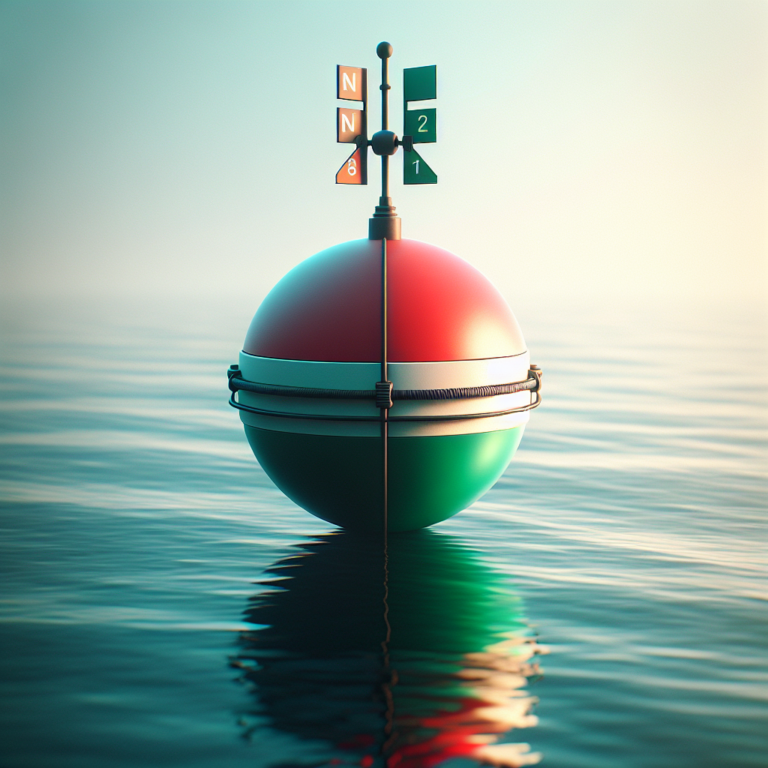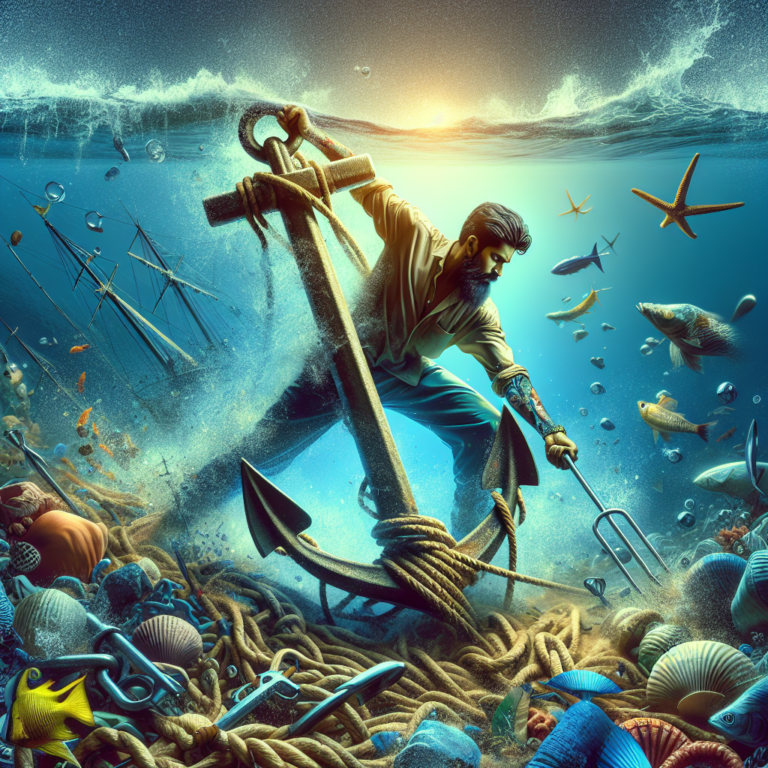Solo Sailing Challenges: Preparations And Techniques
Solo Sailing Challenges: Preparations And Techniques involve maintaining a well-maintained boat with rectified faults, setting up sail handling arrangements, practicing hove-to, and ensuring a calibrated autopilot or self-steering system for solo sailors. When it comes to sleeping while sailing alone, most sailors divide their sleep into two or more blocks, combining it with working and eating.
It is crucial for single-handed skippers to maintain a proper lookout at all times to avoid collisions, as per maritime regulations.
Understanding The Unique Challenges Of Solo Sailing
Solo sailing presents unique challenges that require careful preparations and techniques. From maintaining a well-equipped boat to practicing hove-to and balancing sail plans, solo sailors must be adept at managing every aspect of their voyage, even when it comes to sleeping arrangements at sea.
Sailing alone vs. Sailing with a crew:
- Solo sailing refers to the act of navigating a boat or yacht without any crew members on board. It puts all the responsibilities solely on the individual sailor.
- Sailing with a crew, on the other hand, involves a team of individuals who can share the workload and responsibilities.
Mental and physical demands of solo sailing:
- Solo sailing requires a high level of mental and physical endurance, as the sailor is responsible for every aspect of the journey.
- The mental demands include decision-making, problem-solving, and maintaining focus for extended periods of time.
- Physically, solo sailors need to handle tasks such as sail handling, navigation, and maneuvering the vessel.
Safety considerations for solo sailors:
Safety is paramount for solo sailors, as they don’t have crew members to assist them in case of emergencies. Here are some important safety considerations:
- Adequate knowledge and experience in sailing, navigation, and boat handling.
- Regular equipment checks and maintenance to ensure everything is in proper working condition.
- The use of safety equipment, including life jackets, harnesses, and safety lines.
- Familiarity with weather forecasts and keeping a close eye on changing weather conditions.
- Developing and practicing emergency procedures, including man overboard drills.
- Maintaining regular communication with shore support or other sailors in case of emergencies.
Remember, solo sailing presents unique challenges that require careful preparation, physical fitness, and mental resilience. By understanding these challenges and taking appropriate safety measures, solo sailors can have a rewarding and fulfilling experience on the open water.
Preparing Yourself For Solo Sailing
Prepare yourself for solo sailing challenges by ensuring your boat is well-maintained, with all known faults rectified. Set up sail handling arrangements with lines back to the cockpit and practice hove-to maneuvers. Calibrate your autopilot or self-steering system and have a balanced sail plan checked.
Building Sailing Skills And Experience:
- Enroll in sailing courses or training programs to develop foundational skills.
- Attend sailing workshops or seminars to learn advanced techniques and gain practical knowledge.
- Join a sailing club or community to connect with experienced sailors and participate in group activities.
- Gain hands-on experience by crewing on different types of boats and participating in races.
- Practice sailing in various weather conditions and challenging environments to build confidence and resilience.
Seamanship And Navigation Techniques For Solo Sailors:
- Learn how to properly maintain and prepare your boat, including checking equipment and performing routine maintenance tasks.
- Familiarize yourself with navigation tools such as charts, compasses, and GPS systems to ensure accurate course-plotting.
- Develop skills in reading and interpreting weather forecasts, tide charts, and other relevant navigational information.
- Understand basic navigation techniques, such as dead reckoning and triangulation, to navigate without relying solely on electronic devices.
- Build knowledge of seamanship principles, including understanding right-of-way rules, collision avoidance, and anchoring procedures.
Physical And Mental Fitness For Solo Sailing:
- Engage in regular physical exercise to build strength, endurance, and flexibility for the physical demands of solo sailing.
- Practice balance and coordination exercises to improve stability on a moving boat.
- Develop mental resilience and problem-solving skills to handle unexpected challenges or emergencies while sailing alone.
- Maintain a healthy diet and stay well-hydrated to ensure peak performance and focus during long passages.
- Consider mindfulness practices or relaxation techniques to manage stress and maintain mental clarity while solo sailing.
Remember, solo sailing requires a combination of sailing skills, seamanship knowledge, and physical and mental fitness. By actively building your experience and preparing yourself in these areas, you’ll be better equipped to handle the challenges and adventures that solo sailing brings.
So, make the most of training opportunities, seek guidance from experienced sailors, and keep honing your skills for a safe and enjoyable solo sailing experience.
Essential Gear And Equipment For Solo Sailing
Solo sailing presents unique challenges that require careful preparation and the right gear and equipment. From maintaining your boat to setting up sail-handling arrangements and utilizing autopilot or self-steering systems, these techniques and preparations are essential for a successful solo sailing experience.
Solo sailing presents unique challenges that require proper preparation and the right gear and equipment. Whether you’re a seasoned sailor or just starting out on solo voyages, it’s crucial to have the essentials in place to ensure your safety and comfort on the open water.
Here are some key considerations when it comes to choosing the right boat, upgrading and maintaining it, and having the necessary safety equipment.
Choosing The Right Boat For Solo Sailing:
- Size and stability: Opt for a boat that is manageable for one person and offers good stability, especially during rough weather conditions.
- Self-sufficiency: Look for a boat that allows for easy single-handed operation, with controls and rigging accessible from the cockpit.
- Autopilot or self-steering: Consider installing an autopilot system or self-steering gear to assist you during long stretches of sailing without the need to constantly steer the boat.
- Safety features: Ensure the boat has appropriate safety features such as strong lifelines, sturdy handholds, and a reliable emergency tiller in case the steering system fails.
Upgrading And Maintaining Your Boat For Solo Voyages:
- Rigging modifications: Make necessary rigging modifications to ensure all lines lead back to the cockpit, making it easier to handle sails, reef, and adjust trim without leaving the cockpit.
- Auxiliary power: Install a reliable auxiliary power system, such as an electric or diesel engine, to provide assistance when needed, especially during tricky maneuvers or in limited wind conditions.
- Communication devices: Equip your boat with reliable communication devices like a VHF radio, an emergency position-indicating radio beacon (EPIRB), and a satellite phone to stay connected and summon help if necessary.
- Emergency provisions: Have a well-stocked emergency kit that includes tools, spare parts, repair materials, and provisions for extended periods at sea.
Must-Have Safety Equipment For Solo Sailors:
- Personal flotation devices (PFDs): Wear a comfortable and well-fitted PFD at all times while on deck to ensure personal safety in case of unforeseen circumstances.
- Navigation aids: Carry up-to-date electronic navigation systems like a GPS Chartplotter and paper charts as backups, along with a reliable compass and accurate tide and current information.
- Safety harness and tether: Use a safety harness and tether to secure yourself to the boat while on deck, reducing the risk of falling overboard in rough conditions.
- Man overboard (MOB) systems: Install a MOB system that can quickly alert you and help guide you back to a person who has fallen overboard.
- Emergency signaling devices: Keep flares, a sounding device, and a high-intensity flashlight within reach for signaling distress in low visibility or emergency situations.
By carefully selecting the right boat, upgrading and maintaining it for solo voyages, and having the essential safety equipment, you can navigate the challenges of solo sailing with confidence and peace of mind. Remember to always prioritize safety and be prepared for unexpected situations that may arise on your solo adventures.
Happy sailing!
Navigation And Passage Planning For Solo Sailing
Solo Sailing Challenges: Preparations and Techniques cover the essential aspect of navigation and passage planning for solo sailors. From maintaining the boat to setting up sail handling arrangements and practicing hove-to maneuvers, this guide equips sailors to overcome the unique challenges of sailing alone.
Understanding Weather Patterns And Forecasts:
Weather plays a crucial role in solo sailing, and it’s essential to have a good understanding of weather patterns and forecasts before embarking on a solo voyage.
Here are some key points to consider:
- Study weather patterns and how they can impact your route.
- Regularly check weather forecasts from reliable sources.
- Pay attention to wind speed, direction, and any potential storms or adverse weather conditions.
- Be prepared to make alterations to your course based on changing weather conditions.
Charting And Plotting Courses For Long-Distance Solo Sailing:
Proper charting and plotting of courses are vital for successfully navigating long distances during solo sailing.
Consider the following:
- Obtain accurate and up-to-date nautical charts for your intended route.
- Plot your course, marking waypoints, landmarks, and potential hazards.
- Take into account tidal currents, wind patterns, and navigational buoys.
- Use electronic navigation tools and GPS systems as additional aids.
Navigational Aids And Techniques For Solo Sailors:
Solo sailors face unique challenges when it comes to navigation, but there are several aids and techniques that can help ensure a safe and successful journey.
Here are some tips:
- Use radar and AIS (Automatic Identification System) to detect other vessels and potential obstacles.
- Familiarize yourself with using a sextant and celestial navigation techniques as a backup for electronic navigation systems.
- Invest in a reliable compass and learn how to use it effectively.
- Stay updated on the latest advancements in navigation technology.
Remember, solo sailing requires careful planning and preparation. By understanding weather patterns, charting your course, and utilizing navigational aids and techniques, you can enhance your safety and enjoyment while sailing solo.
Coping With Isolation And Fatigue During Solo Sailing
Coping with isolation and fatigue during solo sailing presents unique challenges that require strategic preparations and techniques. Sailors often break up their sleep into multiple blocks, alternating between rest, work, and eating to ensure they stay alert and maintain their safety at sea.
Solo sailing can be a challenging endeavor, especially when it comes to coping with isolation and fatigue. Spending extended periods alone at sea can lead to feelings of loneliness and exhaustion. However, with the right strategies and preparations, you can effectively manage these challenges and ensure a safe and enjoyable voyage.
Here are some techniques to help you cope with isolation and fatigue during solo sailing:
Strategies For Dealing With Loneliness At Sea:
- Stay connected: Utilize modern technology to stay connected with loved ones and other sailors. Regular communication through satellite phones, email, or social media can help combat feelings of isolation.
- Maintain a routine: Establish a daily routine that includes activities like journaling, reading, or fishing. Keeping yourself occupied can help distract from the loneliness and create a sense of normalcy.
- Engage in self-reflection: Solo sailing provides an opportunity for introspection and self-discovery. Embrace the solitude and use it as a chance to learn more about yourself and your capabilities.
- Listen to music, podcasts, or audiobooks: Having some form of entertainment, like listening to music or engaging in podcasts or audiobooks, can provide companionship and alleviate feelings of loneliness.
Managing Sleep And Fatigue During Solo Voyages:
- Establish a sleep schedule: Create a consistent sleep routine that allows for adequate rest. Divide your sleep into shorter periods to ensure you’re always well-rested.
- Take power naps: When fatigue creeps in, it’s important to take short power naps to recharge. Set alarms to wake up after 20-30 minutes of sleep to avoid feeling groggy.
- Stay hydrated and eat nutritious meals: Proper nutrition and hydration are essential for maintaining energy levels. Eat balanced meals, snack on healthy foods, and drink plenty of water to combat fatigue.
- Practice mindful relaxation techniques: Engage in relaxation techniques such as deep breathing exercises or meditation to reduce stress and promote better sleep.
Psychological Preparation For Extended Periods Alone:
- Stay positive and motivated: Adopt a positive mindset and remind yourself of the reasons why you chose solo sailing. Focus on the sense of freedom and accomplishment the journey provides.
- Visualize success: Before embarking on your voyage, visualize yourself overcoming challenges and arriving safely at your destination. Positive visualization can help build mental resilience.
- Seek professional support: Consider consulting with a sports psychologist or mental health professional who can provide guidance and strategies for managing isolation and psychological challenges during solo sailing.
- Prepare mentally: Mentally prepare yourself for the solitude and potential hardships that may arise during the voyage. Anticipating challenges and developing coping strategies will help you navigate through difficult moments.
Remember, solo sailing can be an incredibly rewarding experience despite the isolation and fatigue. By implementing these strategies and techniques, you can overcome the challenges and enjoy a successful solo voyage. Stay resilient, stay connected, and savor the unique journey ahead.
Managing Emergencies And Challenging Situations At Sea
Discover the essential preparations and techniques for managing emergencies and challenging situations when solo sailing. Learn how experienced sailors break up their sleep patterns to ensure safety and efficiency at sea.
Solo sailing can be an exhilarating and rewarding experience, but it also comes with its fair share of challenges. One of the key aspects of solo sailing is being prepared to handle emergencies and challenging situations that may arise at sea.
In this section, we will discuss techniques and preparations that solo sailors can undertake to manage emergencies effectively.
Man Overboard Situations: Techniques And Drills
When sailing solo, the risk of a man overboard situation is a constant concern. It is crucial to know the proper techniques and drills to handle such emergencies promptly. Here are some key points to remember:
- Maintain constant vigilance while on deck and frequently check for any signs of distress from crew members or passengers.
- Perform regular man-overboard drills to practice the procedures and fine-tune your response time.
- Have a throwable flotation device, such as a life ring or buoy, readily accessible on deck.
- Deploy a buoyant marker or a dan buoy to enhance visibility and aid in locating a person in the water.
- Immediately stop the boat and initiate a quick and coordinated search and rescue operation.
- Utilize navigation tools and equipment, such as GPS and radar, to aid in determining the exact location of the incident.
- Always maintain clear communication with crew members and ensure that everyone is aware of their assigned roles and responsibilities during a man-overboard situation.
- Practice recovery techniques, including maneuvering the boat to retrieve the person in the water and safely bringing them back on board.
Remember, prevention is the key to avoiding man-overboard situations. Ensure that all crew members wear appropriate safety gear, such as life jackets or harnesses, and have a clear understanding of the onboard safety procedures.
Dealing With Equipment Failures And Repairs During Solo Voyages
Equipment failures are inevitable at sea, and being prepared to handle them during solo voyages is crucial. Here are some tips to help you deal with equipment failures and repairs effectively:
- Regularly inspect and maintain all onboard equipment, including the engine, rigging, sails, and navigation instruments.
- Carry a basic tool kit and spare parts that are essential for repairs and replacements.
- Familiarize yourself with the functioning of different systems on your boat and practice troubleshooting techniques.
- Follow a checklist for routine maintenance and perform regular checks to identify any potential issues.
- Stay updated on the latest technical advancements in sailing equipment and consider investing in reliable and high-quality gear.
- Have contingency plans in place for critical systems, such as backup communication devices, alternate power sources, and secondary navigation instruments.
- Prepare a comprehensive list of emergency contacts, including marine assistance services, nearby ports, and fellow sailors who can offer assistance if needed.
Remember, staying calm and composed during equipment failures is essential. Assess the situation, prioritize repairs, and consider seeking professional assistance if required.
Emergency Communication And Rescue Procedures For Solo Sailors
Effective communication and rescue procedures are essential for solo sailors in case of emergencies. Here are some key pointers to keep in mind:
- Carry an emergency communication device, such as a satellite phone or EPIRB, that can transmit distress signals and rescue requests.
- Familiarize yourself with distress signal protocols and international maritime communications standards.
- Notify the nearest coast guard or relevant authorities about your sailing plan, including your intended route and estimated time of arrival.
- Regularly check weather forecasts and stay informed about any potential hazards or changes in sea conditions.
- Establish a reliable method of communicating with family and friends ashore, such as through regular check-ins or scheduled updates.
- Consider joining a network of fellow solo sailors or a community of experienced sailors who can assist in times of emergencies.
- Stay updated on the latest emergency rescue procedures and protocols, including distress calls, flare usage, and emergency anchoring techniques.
Remember, timely communication and adherence to proper rescue procedures can make a significant difference in ensuring your safety and the success of a rescue operation.
By following these techniques and preparations, solo sailors can be better equipped to manage emergencies and challenging situations at sea. Keep in mind that thorough preparation, regular training, and staying calm under pressure are key to ensuring a safe and enjoyable solo sailing experience.
Tips And Techniques For Efficient Solo Sailing
Prepare for the challenges of solo sailing with these efficient tips and techniques. From maintaining your boat to setting up sail handling arrangements and practicing balanced sail plans, you’ll be well-equipped to navigate the waters solo.
Single-Handed Sail Handling Techniques:
- Utilize lazy jacks or a sail bag to keep the mainsail contained and organized while hoisting, lowering, or reefing.
- Consider using roller furling or in-mast furling systems for easier and more efficient handling of the headsail.
- Practice using a self-tacking jib or a jib boom to simplify tacking and gybing maneuvers.
- Install a deck organizer or rope clutch system to lead lines back to the cockpit for easy access and control.
- Use jammers or winches to secure lines and control tension while sailing solo.
- Master the art of single-handed tacking and gybing by carefully coordinating the release and trim of the headsail and mainsail.
Maximizing Boat Speed And Efficiency As A Solo Sailor:
- Keep the hull and keel clean to reduce drag and optimize performance.
- Regularly inspect and maintain the rigging and sails to ensure they are in good condition.
- Trim the sails according to wind conditions by adjusting the angle of the sails and the tension of the sheets.
- Practice proper weight distribution on the boat to maintain balance and prevent excessive heel.
- Monitor and adjust the boat’s trim to optimize speed and efficiency.
- Consider using lightweight and high-performance sails for improved speed.
Self-Steering Solutions For Solo Sailing:
- Invest in a reliable autopilot system that can handle the demands of solo sailing.
- Explore the use of wind vane self-steering systems that utilize the wind to maintain the course.
- Consider installing an electronic wind sensor to provide real-time data for more accurate self-steering.
- Experiment with different self-steering settings to find the right balance between course stability and energy efficiency.
- Have a backup self-steering solution in case of technical failures.
Remember, mastering single-handed sail handling techniques, maximizing boat speed and efficiency, and finding the right self-steering solution are essential for a safe and enjoyable solo sailing experience. Practice, preparation, and continuous learning will contribute to your skills as a solo sailor and help overcome the challenges that arise on the water.

Credit: www.thetimes.co.uk
Frequently Asked Questions For Solo Sailing Challenges: Preparations And Techniques
What Is The Checklist For Solo Sailing?
The checklist for solo sailing includes maintaining the boat, setting up sail handling arrangements, calibrating and using autopilot or self-steering systems, and practicing hove-to and checking the sail plan. It is important to adhere to these guidelines for a safe solo sailing experience.
How Do People Sleep When Sailing Alone?
Solo sailors typically divide their sleep into multiple shorter blocks to ensure safety. They take breaks between sleeping blocks for work and eating.
Is It Legal For A Single-Handed Skipper To Sleep On Watch?
It is not legal for a single-handed skipper to sleep on watch due to the requirement to maintain a proper lookout at all times.
How Hard Is It To Sail Solo?
Sailing solo can be challenging, but with proper preparation and techniques, it is manageable.
Conclusion
Solo sailing presents unique challenges that require thorough preparations and specific techniques. As a solo sailor, it’s important to keep in mind the importance of maintaining a well-maintained boat and ensuring all known faults are rectified. Setting up sail handling arrangements with lines back to the cockpit can make it easier to handle sails alone.
Additionally, having an autopilot or self-steering system in place, calibrated and working properly, can provide some relief during long journeys. Practicing the maneuver of hove-to and regularly checking the balanced sail plan is crucial for a successful solo sailing experience.
When it comes to sleep, solo sailors typically break up their sleep into multiple blocks, allowing time for work and eating during their rest periods. This sleeping pattern reduces fatigue and ensures the skipper remains attentive and alert while on watch.
It’s important to remember the legal obligations of a solo sailor, such as the requirement to maintain a proper lookout at all times to detect any potential collision risks. Preparing for solo sailing challenges requires careful planning and attention to detail.
By following these preparations and techniques, solo sailors can confidently embark on their journey and navigate the open waters with skill and confidence.








